
St. Urho
St. Urho’s Day, celebrated on March 16th, the day before the better-known feast of some minor saint from Ireland, who was alleged to have driven the snakes from the island.
The Liturgical Calendar defines the Church year, outlining a series of seasons and festive occasions that liturgical ceremonies observe throughout the year. Christians used this calendar as a guide, so they could properly celebrate the significant events in the life of Christ and the Church.
The liturgical year is divided into six seasons, each with its own theme and focus. Advent, which heralds the coming of Christ, begins the Church year, followed by Christmas, which celebrates the birth of Jesus. Lent is a time of penance and reflection, leading up to Holy Week, which culminates in the celebration of Easter, the most important feast of the Christian calendar. Ordinary Time follows Easter, with a focus on the teachings of Jesus Christ and the Church. The season of Advent then begins again, marking the end of one liturgical year and the beginning of another.
Throughout the year, the Liturgical Calendar also includes several important feasts and solemnities, such as the Feast of the Epiphany, the Transfiguration, the Assumption of the Blessed Virgin Mary, and All Saints’ Day. These celebrations allow the faithful to honor the lives of the saints and reflect on the significance of their contributions to the Church.
By following the Liturgical Calendar, Christians can participate in a rich tradition of liturgical worship that connects them to the history of the Church and the life of Christ. It provides a framework for the celebration of the mysteries of faith and ensures that Christian followers would never lose sight of the significance of these events in their lives.

St. Urho’s Day, celebrated on March 16th, the day before the better-known feast of some minor saint from Ireland, who was alleged to have driven the snakes from the island.
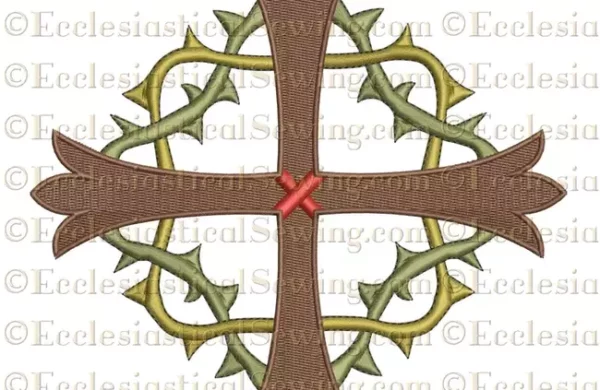
Lent is a penitential season and a time of reflection. Lent has always been a favorite season of the church year. Throughout the years – the rich tapestry of hymns reserved specifically for Lent remains vivid, as the scriptures of Christ’s Passion and Lenten hymns were forever twined together in mind. One could begin to imagine the agony Christ suffered as he prayed. Singing the hymn “Go to Dark Gethsemane” in the dim evening light of the church. It was then and still a favorite Lenten Hymn.

Many Christians today overlook historic Church traditions and vestments. Like Roman Catholic, Eastern Orthodox, Anglican, Lutheran, and Episcopalian have unique practices and materials for their vestments. Despite the beauty of these traditions, many Christians are unaware of them, similar to the limited recognition of events like Fat Tuesday. The appreciation for and celebration of these practices often involve a smaller group within the broader Christian community.
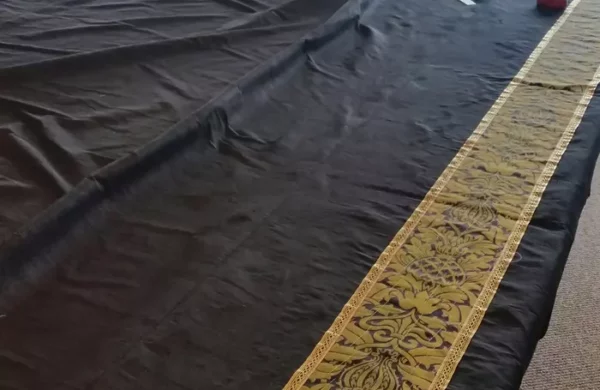
Any guesses? What is 88″ wide by 124″ long? We will use it at our local church for Good Friday… It is so big that we are spending Saturday… Read more Any guesses? →
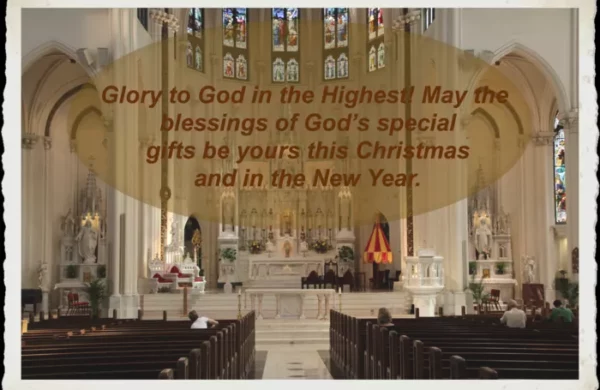
Merry Christmas from Ecclesiastical Sewing
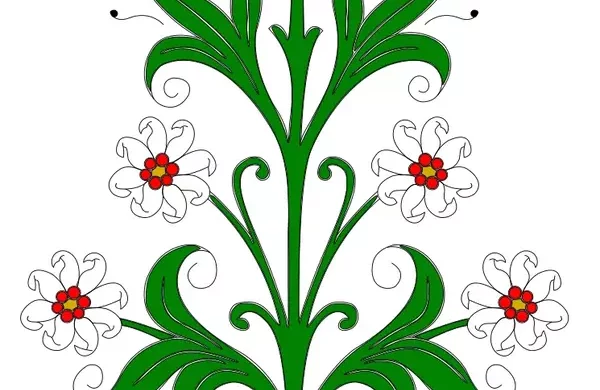
The ancient Israelites worshiped in the Tabernacle and later in the first Temple, which was the stationary building that replaced the Tabernacle. God instructed Moses exactly how to build the richly ornate Tabernacle and the Israelites used this mobile worship space for many years. In the reign of King Solomon, no expense was spared in the construction of the first Temple. This Temple was then sacked and many years later it was rebuilt as recorded in Ezra. Finally, King Herod renovated and added the second Temple, which was then destroyed in 70 A.D.
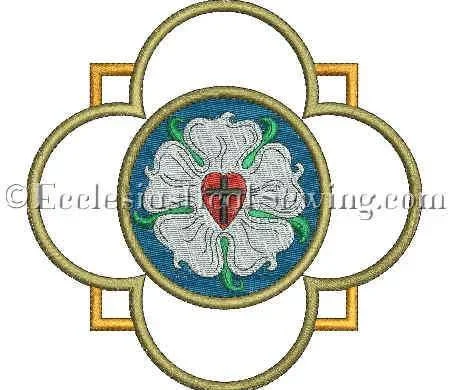
It began when Martin Luther posted his theses, sparking changes in church history. Although denominations split, they kept some traditions, like special church clothes. Ecclesiastical Sewing preserves these traditions by making church clothes for different churches. Studying church history helps us see what’s the same and what’s different. Ecclesiastical sewing is a way of making beautiful things for God.
Saint Jerome, a revered church father born around 342 A.D. in northern Italy. Raised in a Christian family, he renounced worldly pursuits, journeyed to Rome, and was baptized by Pope Liberius. Jerome immersed himself in studying Biblical languages and Scriptures. After traveling, he settled in Bethlehem, devoting his life to Biblical scholarship and translation. Saint Jerome passed away on September 30, 420 A.D.
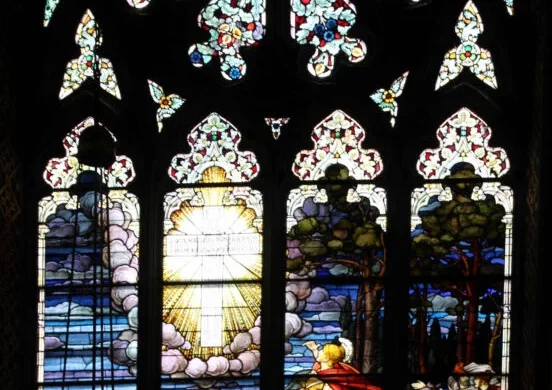
September 14th is noted as Holy Cross Day, which is celebrated in both Eastern and Western Churches around the world. The Church of England marks this festival day with the use of the color Red. Holy Cross Day was introduced into the Lutheran Church-Missouri Synod in 1982, yet this festival may be unfamiliar to many Lutherans today. The history of this festival dates back to the time of Constantine and his mother, St. Helena.
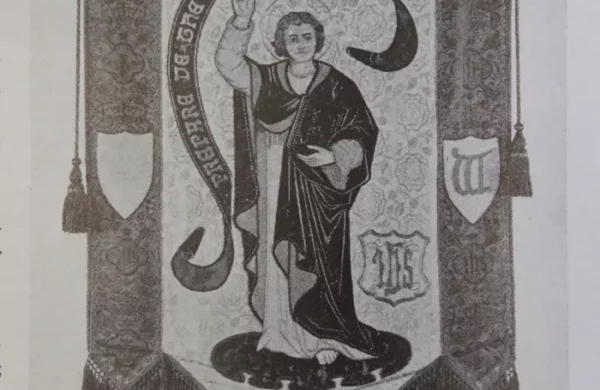
. September 13th is the feast day for St. John Chrysostom–born circa 349 A.D., although many dates between 344 A.D. and 354 A.D. have been argued for by various scholars. This man is one of the pillars of the faith, a church father. His early education influenced his ability to lead the Church and give her many gifts in the form of sermons and liturgy.
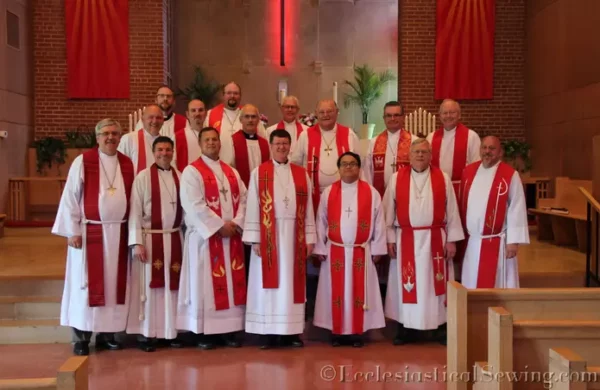
Installing a pastor in a new congregation is a special event, and many fellow pastors make a point of attending installation services to provide support, encourage, and pray for the newly called pastor. The service is rich and meaningful, with each pastor in attendance selecting and reading a scriptural text over the new pastor.
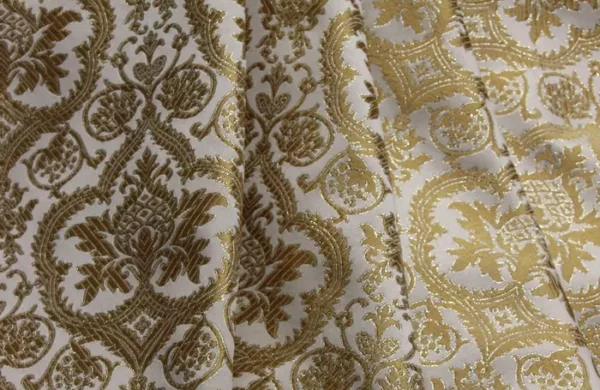
Just as we await the dawn and full light of day to behold the Resurrection, Evesham bursts forth in full light, bright and radiant as we behold the Joy of the Resurrection.
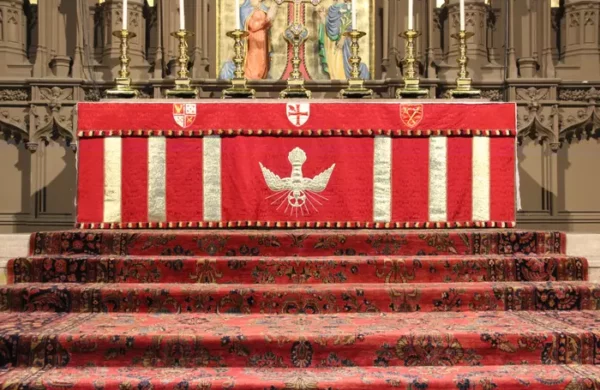
Features of Church architecture and Church Vestments awaiting our viewing pleasure.
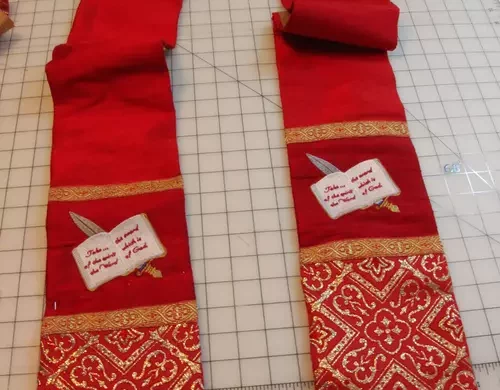
To easily buy the Red Dupioni Silk for the stole base, opt for pre-cut “stole quarters” tailored for a 4″³ pastoral stole or wider/longer lengths for V-back and other styles. A pastoral “stole quarter” is around 14”³ wide by 60”³ long. Similar to quilters buying “fat quarters” for minimal waste, this is a smart approach. Instead of a 60”³ length of 45”³ or 54”³ wide fabric, you purchase just enough for one stole. costs under $20.
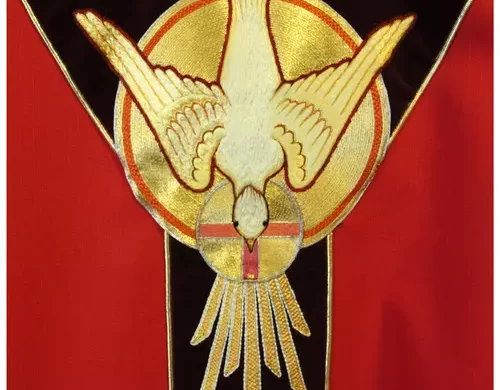
At O’Fallon Monastery, the Sisters created a special vestment collection, including this chasuble with a traditional Dove symbolizing the Holy Spirit on Pentecost. The design blends hand and machine embroidery, using silk and gold threads for a beautiful finish.
You must be logged in to post a comment.